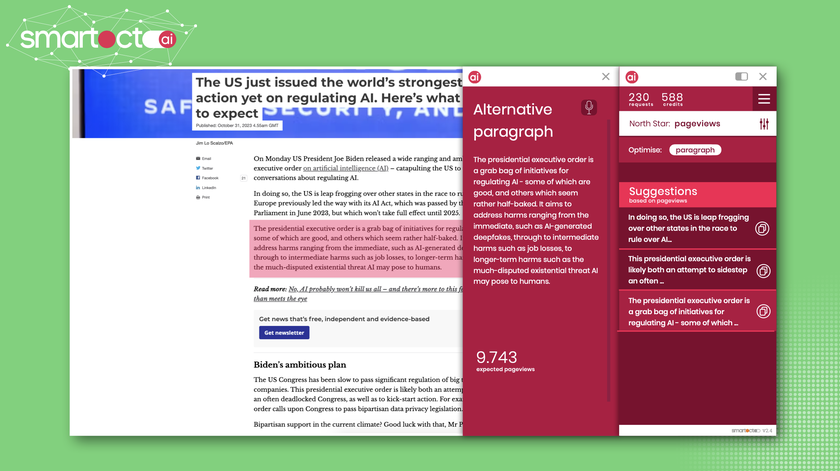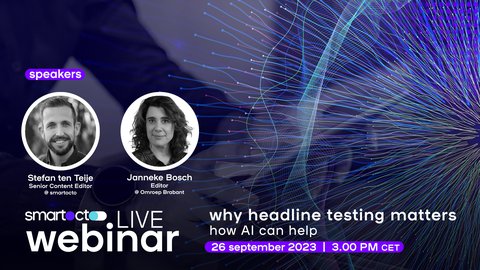So there you have it. The big revolution of foundational models like Claude or ChatGPT is that AI is smoothly applied to human day-to-day language. That opens big new possibilities for storytellers, especially journalists and content marketeers.
In previous years, analytics revolved mainly around human behaviour, measured in clicks, likes, and views. Now with generative AI, reporting systems know a lot more about what the content is actually about. Style, sentiment, readability, topic and format, a real match between audience and story qualities can be understood on a deeper level. This will no doubt lead to more specific personalisation, or help inform more advanced content strategies.
Smartocto.ai and decision making
Smartocto launched smartocto.ai, the first editorial analytics system where AI leads to decision-making. That advanced proprietary combination of Machine Learning, knowledge bases and foundation models will solve problems like what is the best headline, which paragraph or story needs to be rewritten and how, and deep content classification.
Smartocto.ai is even creating a virtual assistant that delivers strategic and practical advice to all the roles in the newsroom. With this, every media professional will have their own personal AI sitting right next to them. We are already seeing very promising results.
This AI is trained by smartocto, and will be completely focused on story strategies. At the same time, values like story copyright and confidentiality are completely secured.
In short: data will really talk to you and only you. It could be the final step in analytics.


